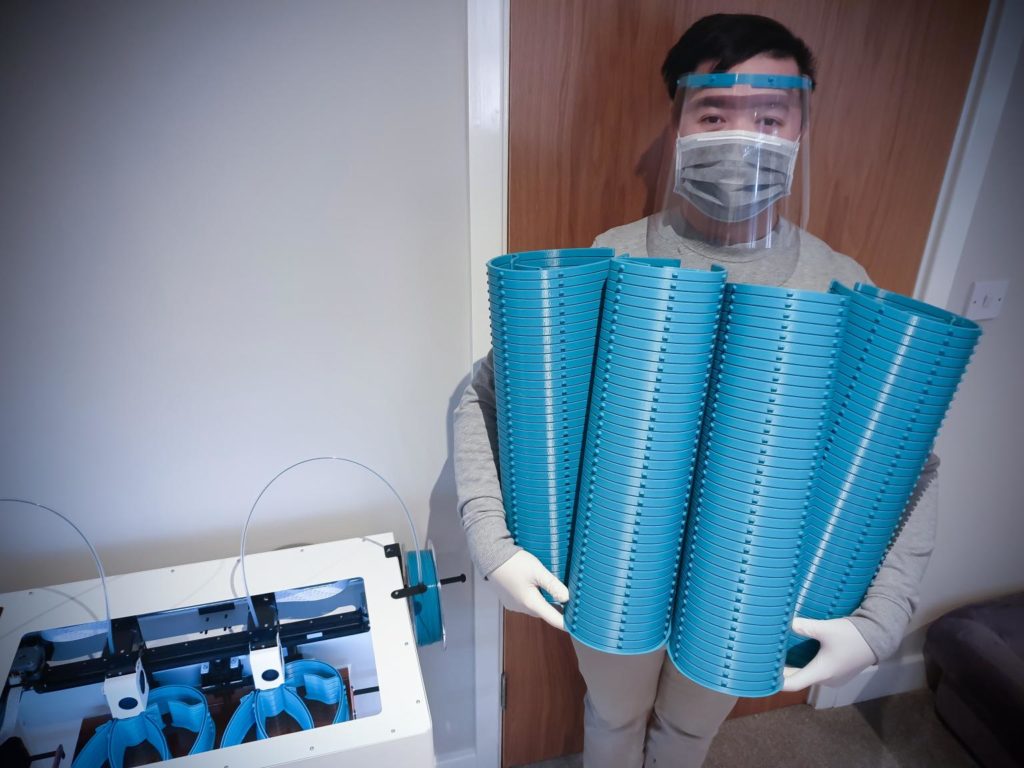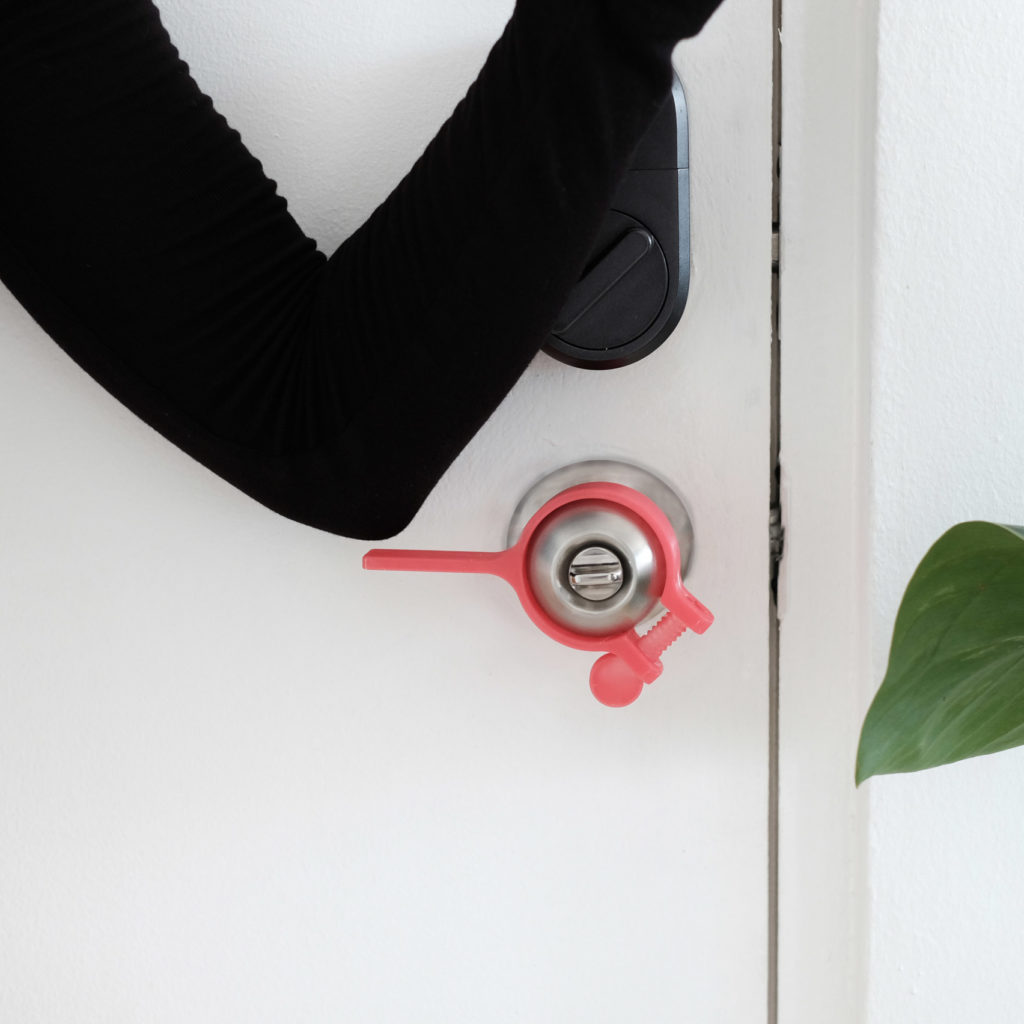Companies, organizations and individuals continue to attempt to lend support to the COVID-19 pandemic supply effort. We will be providing regular updates about these initiatives where necessary in an attempt to ensure that the 3D printing community is aware of what is being done, what can be done and what shouldn’t be done to provide coronavirus aid.
Doctors at the Institut Pasteur de Dakar in Senegal have used 3D printing to produce ventilator parts and increase SARS-CoV-2 testing in such a way that they claim has reduced costs substantially. An Al Jazeera report does not specify exactly what parts are being printed for ventilators, but we’ve reached out to the Institut Pasteur to learn more. The segment suggests that, by 3D printing ventilator parts, engineers have been able to develop ventilators that cost just $60 compared to imported devices that could cost $16,000.
The institute’s experience with previous disease outbreaks has also given it a boost in rapid COVID testing. Relying on technology used for home pregnancy and malaria tests, the institute developed a mobile saliva and finger-prick testing kit that shortens result-processing times to just 10 minutes and, the Institut Pasteur believes, will cost less than $1 per test to manufacture en masse. The tests will be made in Africa by diaTropix, recently founded by the founder of the Insitute Pasteur, and in the U.K. by Mologic Ltd., with production beginning in June. Interestingly, the partnership between the institute and Mologic actually began in 2019, when the base technology was already being developed for other illnesses with the help of donations from the Bill & Melinda Gates Foundation.
By reducing the costs of testing so significantly, hospitals in Senegal are able to administer the ages-old anti-malarial drug chloroquine as a prophylaxis. In turn, the small country has one of the highest recovery rates globally, the highest in Africa and third highest globally. As of Monday, April 27, Senegal had 736 cases of coronavirus, with 284 recoveries and only nine deaths.
Luxury auto makers continue to promote their efforts to supply healthcare workers with 3D-printed personal protective equipment (PPE). Both Bentley and Rolls-Royce are producing face shields for hospitals. An Duong, Supplier Quality Manager at Rolls-Royce Plc and director of Morethan3D Ltd, is producing face shields for the National Health System in the U.K., using a Craftbot Flow IDEX XL to make 160 face shields in a single print.

An Duong, from Rolls-Royce, holds stacks of 3D-printed face shield brackets. Image courtesy of An Duong on LinkedIn.
In addition to donating standard PPE to local health services and supporting local food banks, Bentley has made 30,000 face shields using its 3D printing facilities to supply residential care homes, the NHS, and community services in Cheshire, England.
In Australia, Konica Minolta and 3D Systems are 3D printing Venturi ventilator valves, like those first made in Italy, using a biocompatible, sterilizable and high-temperature resistant material. With Erebus Motorsport, the company is using a Figure 4 3D printer to produce snorkel mask adaptors for replacing P2/N95 masks. Erebus also developed a Perspex box, a device that is placed around a patient’s head and chest to provide continuous filtered airflow. The device has already been delivered to hospitals around the country.
There are also a range of 3D printable hands-free door openers now online. Adapta’s take on the tool allows round door knobs to be opened using an arm or elbow. Designer Matteo Zallio has created a tool that can be used to hook open doors, push buttons, and hold objects without touching objects directly. There is, of course, Materialise’s hands-free door opener, which is bolted onto door handles and door handle maker FSB designed a forearm shield that can be attached to most lever handles. Architectural designers Ivo Tedbury and Freddie Hong created a printable tool to be zip-tied to pull door handles, which they designed for all of the doors they deal with living in an apartment complex.
While the U.S. has its own 3D-printed nasal swab coalition, businesses and organizations in the Netherlands have partnered to replenish their own nation’s 3D-printed test sticks. Three Dutch businesses—Oceanz 3D printing, DEAM and Almed—were able to make, package and sterilize 3D-printed test strips in just two weeks with a member of the diagnostics task force, RIVM, validating the tests. While DEAM organized the supply chain, Almed packed the swabs, and Oceanz made the sticks according to ISO 13485 guidelines.
Meanwhile, in the U.S., Nexa3D, the startup of former 3D Systems CEO Avi Reichnetal, is also making test swabs with the goal of producing 500,000 swabs (in addition to 10,000 face shields) on a weekly basis.
As the pandemic continues to grip the world, we will continue to provide regular updates about what the 3D printing community is doing in response. As always, it is important to keep safety in mind, remain critical about the potential marketing and financial interests behind seemingly good humanitarian efforts from businesses, and to do no harm.
Subscribe to Our Email Newsletter
Stay up-to-date on all the latest news from the 3D printing industry and receive information and offers from third party vendors.
Print Services
Upload your 3D Models and get them printed quickly and efficiently.
You May Also Like
3D Printing News Briefs, July 2, 2025: Copper Alloys, Defense Manufacturing, & More
We’re starting off with metals in today’s 3D Printing News Briefs, as Farsoon has unveiled a large-scale AM solution for copper alloys, and Meltio used its wire-laser metal solution to...
Etsy Design Rule Change Reduces Selection of 3D Printed Goods
Online marketplace Etsy has implemented a rule change requiring all 3D printed goods on the site to be original designs. The update to the site’s Creativity Standards states, ¨Items produced using...
Siraya Tech Introduces New Elastomer 3D Printing Materials, Including Foaming TPU
California company Siraya Tech, founded in 2019 with a focus on material science, customer focus, and agility, develops high-quality 3D printing materials that meet the needs of creators, hobbyists, and...
3D Printing News Briefs, April 12, 2025: RAPID Roundup
The news from last week’s RAPID+TCT in Detroit just keeps on coming! That’s why today’s 3D Printing News Briefs is another RAPID Roundup of more exciting announcements from the trade...



































